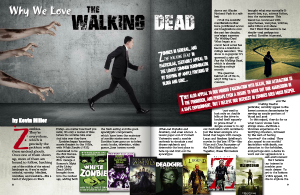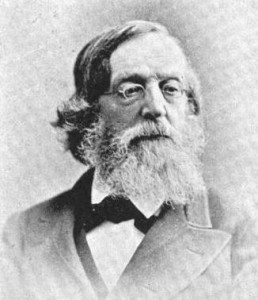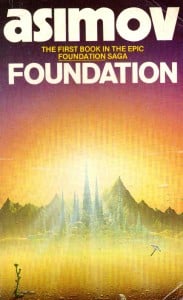A few years ago I made a serious attempt at becoming a day trader. Call it burnout, a midlife crisis or simply a desire to indulge a passion I’ve had since childhood, but I resolved to finally give it a go.
So I did what I normally do when seeking to learn something new: I immersed myself in books, blogs, videos and all sorts of other resources to learn the ropes. I also signed up for a trading service–think of it as a pair of “training wheels”–that gave me signals on when to enter and exit each trade. I even attended Michael Campbell’s World Outlook Financial Conference (which was excellent, BTW, and would have been even better if I had followed a recommendation I received there and put all of my money into silver…).
Like a Vegas casino eager to devour my money, the market rewarded my hard work with some significant early success. Almost at once I was earning more before breakfast each morning than I did at my “real job” during the day, often on a single trade that took less than 20 minutes to execute. It was intoxicating, and dare I say it, addictive. Within a month my trading account was up over 10%, and I figured it was only a matter of time before I kissed my day job goodbye.
Then the season changed, and so did the market. Before, it seemed like I couldn’t make a bad trade. Now, it seemed I couldn’t make one right. Day after day, week after week, the market chipped away at my trading account until I finally determined I had had enough “capital punishment,” and bowed out.
Looking back on that experience now, apart from the mirage of financial independence, what really fascinated me was the market’s ability to quantify sentiment–how people are feeling about a given stock, commodity, index or the market as a whole. Many traders talk about how markets are driven by two primary forces: fear and greed. Phrased a bit more positively, you might call them pessimism and optimism. Either way, your goal as a trader is deceptively simple: discern in which direction market sentiment is going and then position yourself to profit from the move. It doesn’t matter if a stock or a market is going up or down. You can profit either way.
In trading terms, the last place you want to be is “on the wrong side of a trade.” This means you read the signs incorrectly, and the market moved in the opposite direction of the one you predicted. If you don’t have a stop loss in place (an automatic trigger point at which your stock sells if the market moves against you), being on the wrong side of a trade can be very costly indeed.
Finding yourself on the wrong side of a trade can happen for a variety of reasons. But in my experience, the most common culprit is a tendency to form an opinion about which direction the market should go rather than simply observing which way the mark is actually moving and then trading accordingly. This is truly a case of a little bit of knowledge being a dangerous thing, because you become so confident in a particular trading strategy, market authority or your own knowledge of how markets should work that you fail to account for the data that’s right in front of your face.
A typical mistake is to try to pick a top or bottom in the market. When a market hits a new milestone, for example, as the Dow did when it broke 15,000 recently, it will often back off from that point temporarily, consolidate, and then make a strong, quick move in one direction or the other. The question is, in which direction will it go? Is it going to blast through the previous top and soar into the stratosphere, or is it going to get everyone thinking the market truly has no limit and then dive for the bottom, taking billions in trading capital with it? The same goes when trying to pick a bottom. When a stock or a market hits a new low, it’s tempting to think this is finally it, the market has reached it’s limit and is now going to reverse to the upside. But is this really true? And if it is going to reverse, when is it going to move, and by how much?
A trader I admire likens these judgment calls to catching a falling knife–a practice best avoided if you value your fingers. Instead of trying to pick tops and bottoms, which amounts to trading against the market’s momentum, he recommends trading with the momentum of a market and then only reversing direction once the market indicates it is changing direction. So rather than trying to get out in front of the market–which is the best place to get run over–he recommends following along behind it. You won’t make as much per trade, but your risk is lower, and your record of successful trades is far more consistent.
Discerning the momentum of the market is surprisingly simple to do if you learn how to read stock charts, trend lines and other momentum indicators. What makes it difficult is our tendency is to become so emotionally invested in a particular opinion or market position that we absolutely refuse to surrender even though all signs are pointing to the fact we are wrong, wrong, wrong. Even as our losses mount, like a problem gambler, we keep doubling down on our bet thinking that sooner or later, the market will prove us right.
The ability to control such emotions–to admit you’re wrong–and then respond accordingly is truly the difference between failure and success in the markets. (Considering the fact I’ve given up trading, it’s safe to assume I have a bit of work to do in this area.) But I don’t believe this tendency is limited to stock trading. Just as we can end up on the wrong side of a trade, our tendency to become emotionally invested in a particular position can plant us on the wrong side of all sorts of issues.
I got to thinking about this last night while listening to Raborn Johnson’s conversation with Phyllis Tickle on the most excellent Beyond the Box podcast. In her books The Great Emergence and Emergence Christianity, Phyllis recounts how Christianity and, indeed, society as a whole, tends to move through a series of 500-year cycles triggered by a radical shift between central authority structures.
Think about the Christ event just over 2,ooo years ago and the fall of Jerusalem in 70AD, which brought an end to Second Temple Judaism. (And let’s not forget the Babylonian Captivity roughly 500 years before that, which ended First Temple Judaism.) Five hundred years after Christ we see the fall of the Roman Empire. Five hundred years later is the Great Schism. Roughly 500 years after that is the Protestant Reformation and the Enlightenment, which initiated a strong move away from centralized religious authority structures. Now, approximately 500 years later, Tickle believes were are undergoing another massive shift, expressed in part by Emergent or Progressive Christianity, but which is being felt and expressed in various ways across the culture. She believes this most recent shift is being driven by advances in various scientific disciplines as well as the information explosion made possible by technologies like the Internet, all of which have played a huge role in deconstructing previous ways of conceptualizing the world and our place in it.
I think Phyllis is onto something here. Especially when I reflect back on my experience in the stock market. As I noted above, markets quantify sentiment. It doesn’t matter what you think ought to happen. All that matters is what is actually happening. The charts don’t lie. As a trader, you ignore them at your peril. But the markets aren’t totally erratic either. Markets also follow cycles. And as much as we believe in concepts like free will and the autonomous self, market cycles reveal that human behavior exhibits much more of a herd mentality.
You may have heard the phrase, “Sell in May and go away.” What this means is, seasonal factors tend to make markets go up from October to May and then go down or stay flat during the summer months. This isn’t true of every market or commodity, but it works well as a general rule. Markets don’t just follow annual or seasonal cycles though. They also follow multi-year, multi-decade and even multi-century cycles.
I was never so amazed as I was while listening to currency trader David Bensimon at the World Financial Outlook Conference, where he showed us that he could use the price of gold during the American Civil War to predict what the price of gold would be during World War 1. Lo and behold, the numbers were almost exactly as predicted. He did the same thing with World War II, the 1970s oil crisis and on into the future. His predictions weren’t just carefully concealed hindsight, because he used those same principles to extend his predictions into the future. Over the next several years, I saw the price of gold move almost exactly as he predicted. In fact, he was one of the few people who predicted the massive drop in gold that occurred a couple of months ago. He was off by a month or so, but to be fair, he was warning people to step aside from the market back in the fall, and he had predicted the move years before it happened.
The point is, for some reason or other, human sentiment about economics, religion, politics and all sorts of things seems to shift through regular and predictable cycles. Like Phyllis, I’m not sure what drives these cycles or why they take 500 years to mature (assuming her calculations are correct). But I do see a lot of value in reflecting on where sentiment is going right now and how we might position ourselves to be on the right side of it. Like the stock market, it doesn’t matter whether you think sentiment ought to be moving in one direction or another. All that matters is what is.
Unlike the stock market though, which deals in hard data, quantifying theological sentiment is not so cut and dried. But one model that might help us discern the general trend is the Wesleyan Quadrilateral. I’ve unpacked this epistemological model in a previous series of blog posts. However, to summarize, it argues that beliefs are the product of four primary sources:
1) Scripture (or, to de-Christianize things, an authoritative text),
2) Tradition (an authoritative interpretation of the text)
3) Reason (philosophical or theological arguments)
4)Experience (our direct observations of the world)
It seems to me (and Phyllis indicates as much in the podcast) that our tendency to elevate one of these belief-producing mechanisms over the others is what ultimately drives each cycle. For example, the arrival of Jesus initiates a transition away from Tradition to Experience as the ultimate authority. For the disciples, the Apostle Paul and other first century believers, the experience of knowing Christ and the revelation of the Holy Spirit trumps established religious authority structures and the Scriptures themselves, eventually leading to the emergence of an entirely new religion–Christianity.
Over time, however, as the “early adopters” die off, authority naturally shifts away from Experience to Tradition, during which church councils seek to establish an orthodox account of Christ’s life and work by canonizing the Scriptures and summarizing distinctive beliefs, which are reflected in the creedal tradition. As a result, the Church rather than Experience becomes the supreme authority on all matters of faith.
As people become more literate and their knowledge base in general grows, they begin to recognize some inconsistencies between what they read in the biblical text and what they observe in the Church. This prompts some of them, such as Martin Luther, to seek to reform the Church. When that doesn’t work (or, more accurately, when it doesn’t happen fast enough), they break away from the Church and form various splinter groups. These groups disagree on many things, but they are all united in their belief that Scripture rather than Tradition is now their primary authority.
However, the Protestant Reformation inadvertently triggered another significant shift in authority structures that didn’t really come of age (in my opinion) until the rise of people like Charles Darwin and Thomas Huxley in the mid-1800s. This is the Enlightenment or the Age of Reason. I think the mid-1800s are decisive because Darwin’s theory of evolution by natural selection finally gave skeptics what they’d been looking for–a viable alternate creation narrative that required no supernatural involvement (except, perhaps, to get the ball rolling). Now it was possible to form a worldview that required neither Scripture nor Tradition. Reason could explain all (or nearly all). Like the Protestant Reformation though, Enlightenment thinking also had some unintended side effects that we are only now beginning to realize–and which are already causing Reason to wane as our primary authority.
Experimental science is nothing if not an intensive form of sense perception. When experimental evidence runs afoul of scientific theory, scientists don’t ignore or explain away the data. They change or abandon their theories in order to account for the new information. (At least, that’s the way science is supposed to work.) This heavy emphasis on observation and experimentation in science has bled into the rest of life, making us more conscious of our abilities–and limitations–as observers. It has also made us skeptical of overly reductionist rationalistic accounts of life, because they fail to account for the full range of human experience. And seeing as so many scientific and religious authorities have been revealed to be serving some sort of ulterior motive, we become increasingly skeptical of anyone who claims expert status. As Phyllis Tickle points out, the sheer volume of new data flooding our neural networks each day makes it impossible to keep up. So we really have no choice but to decentralize information structures and rely as much as possible on firsthand experience rather than Scripture, Tradition or Reason. Of course, these other three belief-producing mechanisms still play an important role, but all must conceded to the supremacy of Experience.
So in once sense, you could say we have circled back to the radical shift that took place during the time of Christ, when the apostles’ experience of him utterly transformed not only their religion but the entire world. The question is, where do we go from here? Must we inevitably return to Tradition then Scripture and Reason once again?
At the risk of my opinion placing me ahead of “the market,” I would offer an unqualified “yes.” In fact, the shift from Experience to Tradition as our primary authority is already happening. Think about how often you’ve heard the word “curate” or “curator” over the past year, for example. I hear it all the time. Many people and organizations are stepping into this role, because with so much information coming at us each day, we need taste-makers or cultural authorities more than ever to help us sort the good from the bad. For example, I recently purchased a small camera package for shooting documentary interviews. Prior to to hitting the “buy now” button, I spent hours poring over ratings, product reviews and watching test videos, simply because there were so many options, it was my only hope of discerning which option was best. So whether we’re talking about commerce or theology, it seems the shift from Experience to Tradition (an authoritative interpretation of experience) is inevitable not as a philosophical preference but as a logical necessity.
For the same reason, it seems logical that this new tradition will inevitably lead to some sort of authoritative text or body of texts. The important of these texts will become even more important as the founders of the tradition begin to die off, because it will be all we have left of their insights. Sooner or later though, changing circumstances will reveal logical flaws or gaps in the text and tradition that weren’t apparent when it was first written, prompting a shift toward reason as the sole arbiter of these disputes. These arguments will sustain us for a while until experience brings us back down to earth, and the cycle repeats itself once again. Once again, these cycles will happen as a result of logical necessity rather than philosophical or theological preference. As for whether future cycles will take 500 years, my tendency is to say no, simply because if everything else is speeding up, it seems only natural that these cycles will reflect the increasing momentum.
Bound as I am by my current perspective on history, I have no idea what these latter shifts will look like in terms of the content they have to offer. But for the moment, I think it’s safe to say that if you are clinging to Tradition, Scripture or Reason as your primary authority in matters of faith, you are on the wrong side of history, and you’re about to get run over by Experience (if that hasn’t happened already). This isn’t a statement on what ought to be happening right now; merely my assessment of what is. Tradition will soon have it’s day in the sun once again (as will Scripture and Reason), but it’s going to look completely different from the Tradition that preceded it.
So rather than rail against “the market” and where it ought to be going, I recommend settling in and enjoying the ride.
Who knows? You may just profit from the experience…











